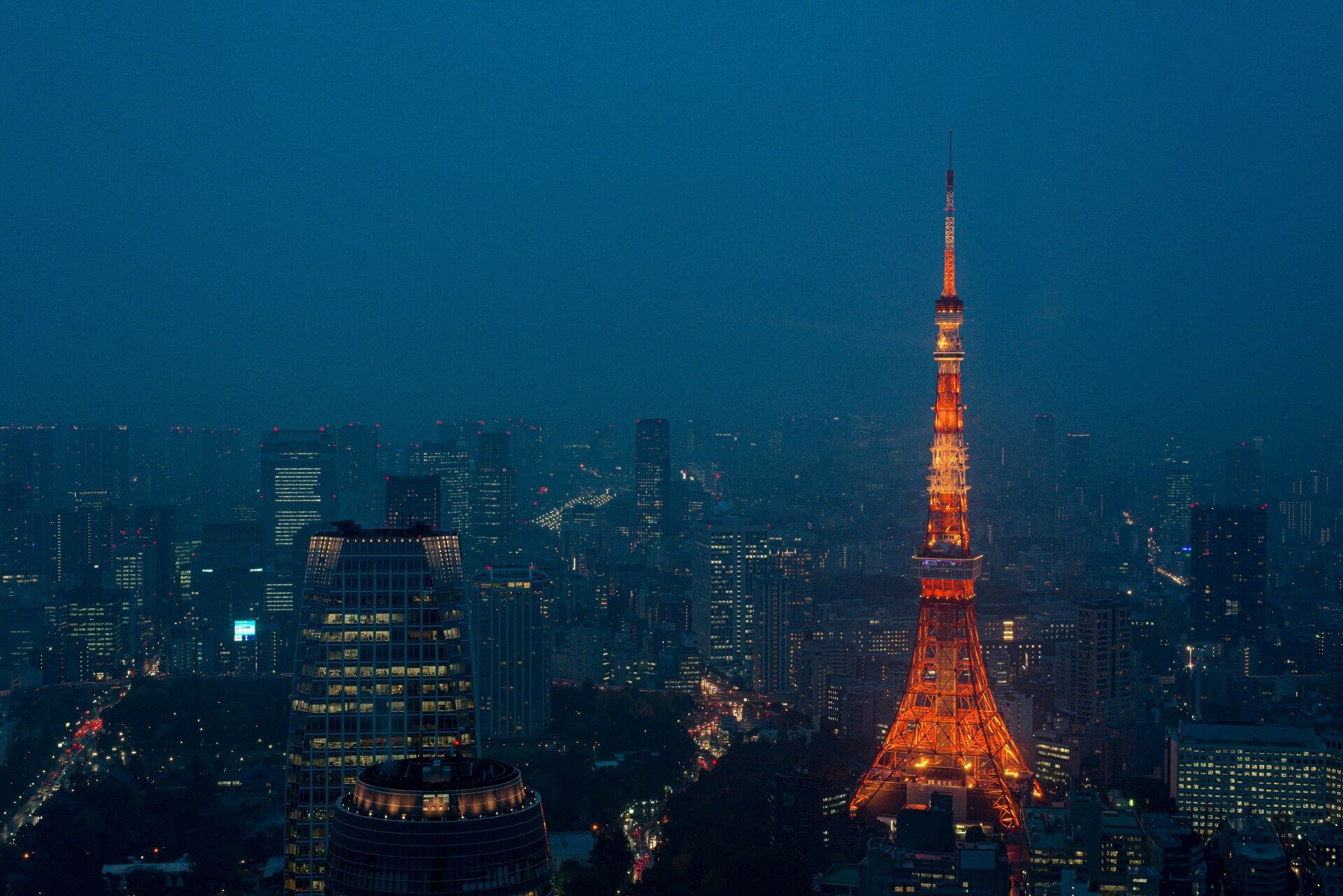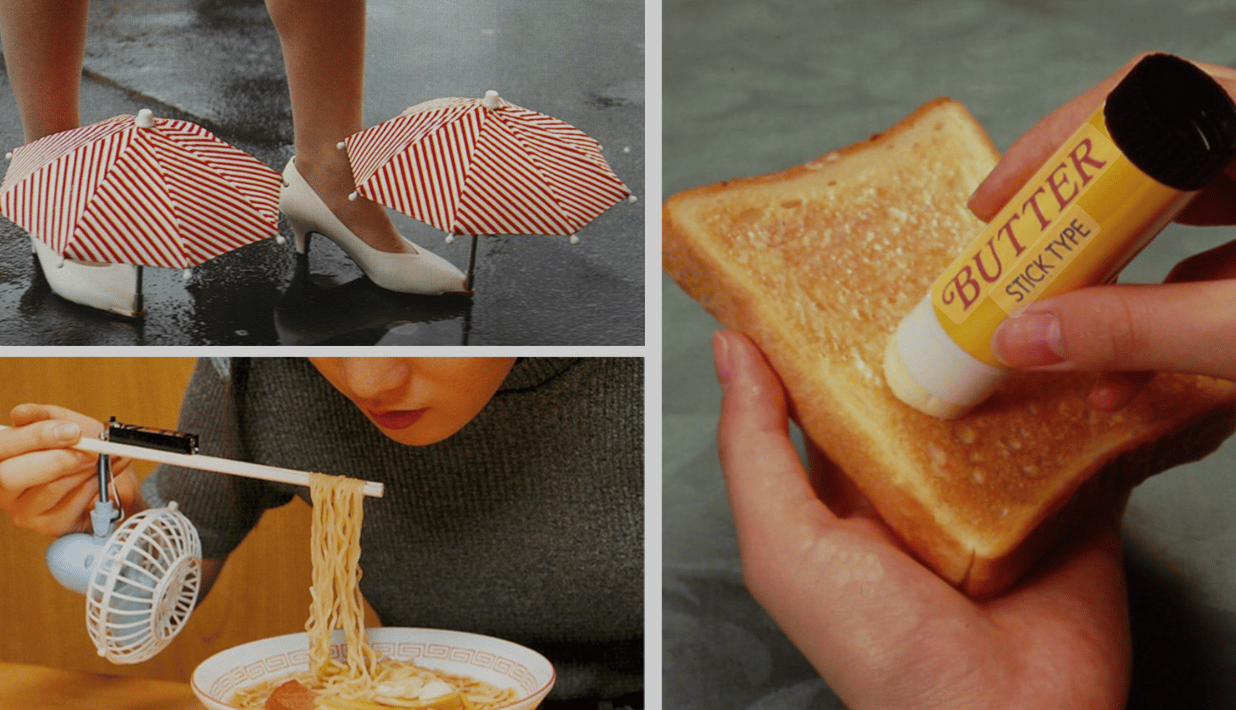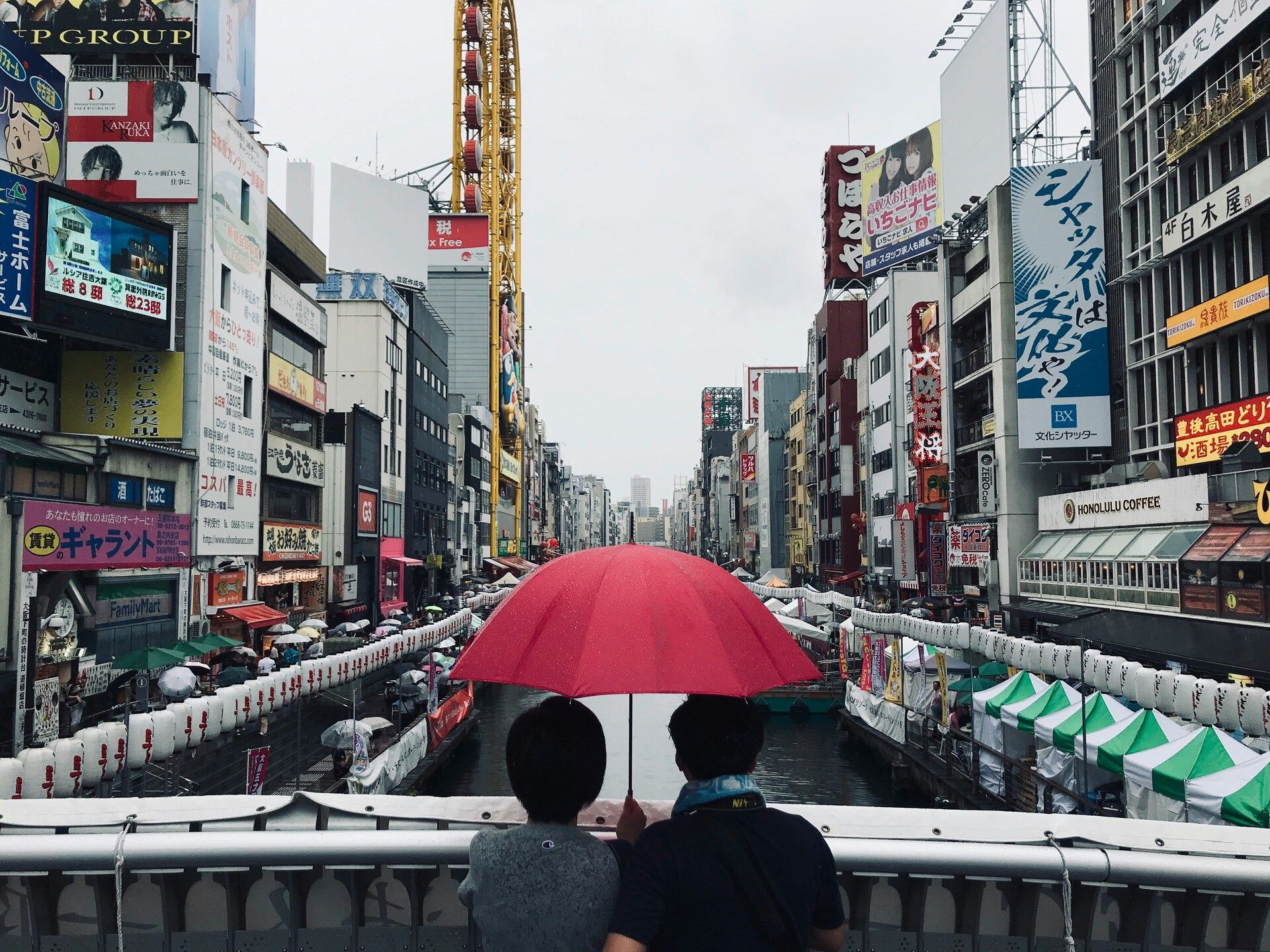- Japan or Die
- Posts
- Yokocho Tours • Tokyo Syndrome • Chindogu • Buy Back Your Time
Yokocho Tours • Tokyo Syndrome • Chindogu • Buy Back Your Time
Japan or Die - Issue #80
Yokocho Tours
As you read this, I’ll probably be touching back down in Tokyo. I skipped posting last week as I’ve been splitting my time between Los Angeles and Tokyo and was busy packing and working on some new exciting things for Japan or Die.
I’ve decided it would be fun to start giving yokocho tours starting late October through December to those of you who will be visiting during this time and are interested. I will take 1-2 people per evening on a 2-hour food/drink adventure.
I’m offering $100 off per person if you reply to this email within the next 72 hours to book a tour. Deadline: 10:00 am PST, OCT-11-2025.
DETAILS:
WHAT AM I GETTING MYSELF INTO
I will take your group (of 1 or 2 people) on a 2-hour food adventure into one of my favorite yokochos (many of the smaller establishments don’t allow groups of more than 3).
Explore the mysterious alleyways of Tokyo’s yokochos where small izakayas thrive and incredible food and experiences live. We will visit multiple places, try exciting Japanese dishes, meet local people, and enjoy Tokyo’s incredible yokochos. This will give you an insider experience that most people who visit Japan never get the chance to do.
WHERE ARE WE GOING
Visit one of my favorite Yokochos: Harmonica Yokocho, Ameyoko, Sankaku Chitai, Omoide Yokocho/Yakitori Alley, or elsewhere (there are numerous options). I’m happy to recommend one based on your preferences and location.
WHEN DOES THIS GO DOWN
Tours begin after sunset. Contact me about your trip, and we will find a mutually agreeable date and time.
HOW MUCH
A two-hour Yokocho tour with me is $250 per person ($150 per person if you reply to this email within the next 72 hours to book your tour) with a 2-person maximum. This does not include food or drink. I’m your guide to help you navigate the Yokocho, pick amazing places to eat/drink, give tips on izakaya culture and etiquette, and have the time of your life. (Tips appreciated, but not expected.)
THINGS THIS TOUR IS NOT
I speak some Japanese (it’s far from fluent), so I won’t be interpreting word-for-word everything you want to say to locals and vice versa. This is about having a guide to help facilitate you having a great time in uniquely Japanese locations that many people are hesitant to visit on their own. Once you’ve been on this tour, you’ll feel comfortable and confident returning to these places or checking out new yokochos on your own. Consider it an intro to izakaya dining.
WHAT TO BRING
Please bring a spirit of openness and adventure. These tours are spontaneous; depending on you, the crowdedness of various locations, and the inspirations of the moment. If you are looking for something more structured, this may not be the right experience for you.
Whether you choose one of these tours or not, I hope you have the most incredible time possible in Japan. Thanks for taking the time to read this!
Tokyo Syndrome

Photo by Marek Okon on Unsplash
Pari Shōkōgun or Paris Syndrome “is a cluster of psychiatric symptoms exhibited by some individuals when visiting Paris, that can be viewed as a severe form of culture shock.” The symptoms are no joke, and include “acute delusional states, hallucinations, feelings of persecution…anxiety, dizziness…” and more.
These quotes are from Wikipedia. If you’d like to read more, go here.
Paris Syndrome is most common among Japanese tourists, likely stemming from how idealized Paris is in Japanese culture. Japan has a deep admiration and often obsession with all things French. Michelin star French restaurants and French cooking are huge in Japan. There’s even a fantastic Netflix series Le Grand Maison Tokyo with Japanese French chefs as the main characters. And that’s just the beginning, French influence and popularity are everywhere in Tokyo, from haute couture to the Tokyo Tower (which is directly inspired by the Eiffel tower).
It’s not that Paris isn’t one of the most beautiful, awe-inspiring, and romantic cities on the planet. It’s just that when it turns out to be different than what a Japanese person has spent their life imaging and expecting it to be, it can come as a huge shock.
I’m starting with Paris Syndrome because it’s a known thing. I believe there is also a Tokyo Syndrome.
I’ve read stories of travelers visiting Tokyo, and it not being what they expected, with them feeling let down, disconnected, and disenchanted by Tokyo.
I’d hate for this to happen to anyone reading this newsletter.
Let me start by saying it’s totally ok to visit Tokyo, and not instantly decide that it’s the greatest city on this planet.
There’s incredible attention to beauty and detail in everything Japanese people create from food and drinks to clothing, jewelry, notebooks, etc., but there are aspects of Tokyo you simply may not expect until you are here. For example:
You may love that Tokyo is clean and orderly but feel annoyed by the absence of trash cans, or shocked to see dark, cluttered alleys in certain areas that are filled with exposed wires. However, the distinct blade runner vibes may bring you joy.
You might love the efficiency (and cleanliness) of the trains but be caught off guard by the video screens playing commercials onboard or that some trains do not have air conditioning.
You may be disappointed by the decidedly not modern buildings everywhere, or the bland grey or tan tile-covered apartment complexes you pass while on the the train, yet in awe when in one of Tokyo’s spectacular parks, beautiful gardens, or modern architecture like the Daikanyama T-Site Tsutaya.
If you’re into anime/manga, you might mistakenly think Nakano Broadway will be exclusively filled with anime and manga and be surprised to discover vintage watches, new and used books, discount kimonos, vintage cameras, fun cafes, and other unique stores also in that area.
Maybe you’re not expecting Tokyo to be as crowded or for the restaurants you imagined to be found up narrow staircases on the upper floors of seemingly random buildings.
Yet, you’ll feel cozy once inside a small izakaya, or charmed by the farmers markets, and (hopefully) marvel at the amount of small pleasures you will come across on any given day.
There are a 1000 things to absolutely LOVE about Tokyo… some of them just might not be the things you’re expecting.
Chindogu

When magazine editor/writer Kenji Kawakami created Chindogu (useless little gadgets that are impractical, but humorous) in order to fill the last empty pages of the monthly magazine, Mail Order Life, he certainly had no idea how popular they’d become.
These silly inventions have been entertaining people since the early 80s, have spawned a series of three books (101 Unuseless Japanese Inventions: The Art of Chindogu, 99 More Unuseless Japanese Inventions: The Art of Chindogu, and The Big Bento Box of Unuseless Japanese Inventions), The International Chindogu Society (with an entire website dedicated to chindogu), and even have a set of ten tenets dictating what principles chindogu should be based on.
The Ten Tenets of Chindogu (from Wikipedia):
Cannot be for real use
Must exist
Must have a spirit of anarchy
Is a tool for everyday life
Is not a tradeable commodity
Must not have been created for purposes of humor alone: humor is merely the by-product
Is not propaganda
Is not taboo
Cannot be patented
Is without prejudice
One chindogu, the selfie-stick, even became a popular invention.
Buy Back Your Time

Photo by Gena Okami on Unsplash
Time is limited, especially when you’re traveling. There are always more things to do than time to do them in. Decisions, decisions.
I’m not opposed to “wasting” time while traveling. I think some of the best time you can possibly have in another country, in life itself even, is when you don’t even have a plan or when you stray from your plan to enjoy the moment. Lingering at a cafe, watching the sun set, chatting with locals, purposely getting lost just to see what you’ll discover, etc.
I would go as far as to say most of my travel strategy, most of what I optimize for, is to have time to spend in places that have the best vibes.
In service to my desire to do not very much in a lovely locale, I strongly dislike expending time doing tedious but necessary things like getting from place A to place B. So, I am in favor of ways to buy back some of my time. Taxis fall into this category. In Japan, they have a reputation of being expensive, and they are somewhat expensive, but much less so now that the value of the yen has gone down.
Ways to buy back your time (some actually don’t cost any money):
Fly non-stop.
Use points to book business-class so you can get some sleep.
Take a sleeper train or bus between cities or countries.
Take a taxi. Yes it feels cool, and insider, to learn to navigate the trains. And it’s fun to ride them. Not when they’re packed to the gills and you can smell everyone’s sweat and everything. That’s definitely not fun. In many situations grabbing a taxi can save you significant time and inconvenience for only a bit more money. That’s well worth it in my opinion.
Don’t wait in a 2 hour line for some ramen that is only marginally better (if that) than another ramen joint a half a block away (This one doesn’t even cost any money).
Do things close to where you’re staying. No matter where that is. Do local things. Extremely local things. Explore whichever neighborhood you ended up choosing to stay in even if it’s not considered the most popular or doesn’t have a zillion Instagram reels about it.
This is how I’ve met most of my favorite people in Japan. I simply go to a small restaurant/izakaya/bar in an out-of-the-way neighborhood, and become a regular. I avoid crowds, lines, other tourists, higher prices and I get my very own unique version of wherever I’m visiting. My best Japanese friends don’t live in downtown Shinjuku or Shibuya. They live in smaller neighborhoods in lesser known parts of town.
I took a 2 week vacation in Tokyo once where I stayed in Kichijoji for 90% of the time. Yes, Kichijoji is an incredible area of Tokyo, but I’ve also stayed in areas of Tokyo I’ve never heard of before arriving, and had incredible experiences in those locations as well.
The most clicked link from the previous issue was for this video about Japan’s tricked out trucks: Dekotora.
The 2nd most clicked link from the previous issue was for this article on the meanings of various Japanese gestures.
If you know someone who would enjoy this post, please share.
—And if someone sent you this post, you can subscribe here.
NB: We sometimes use affiliate links.